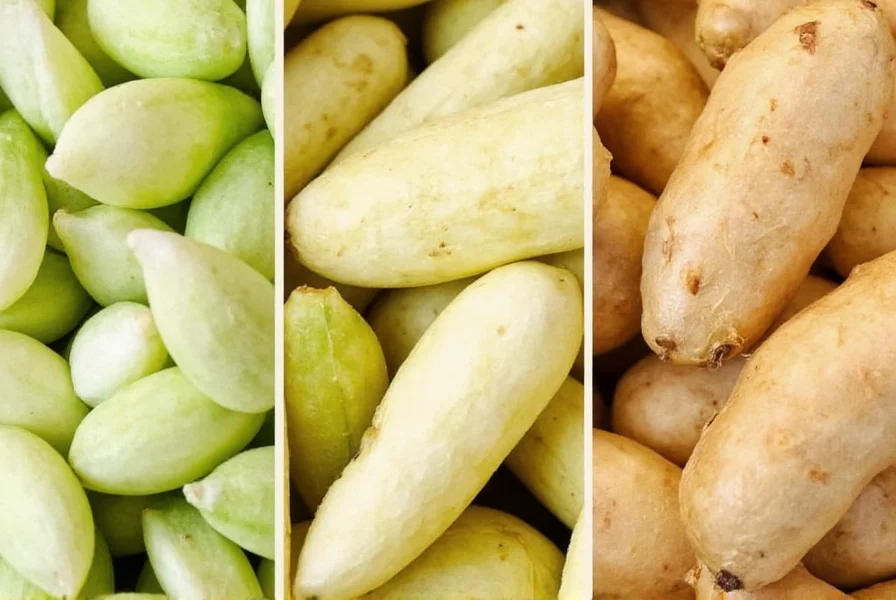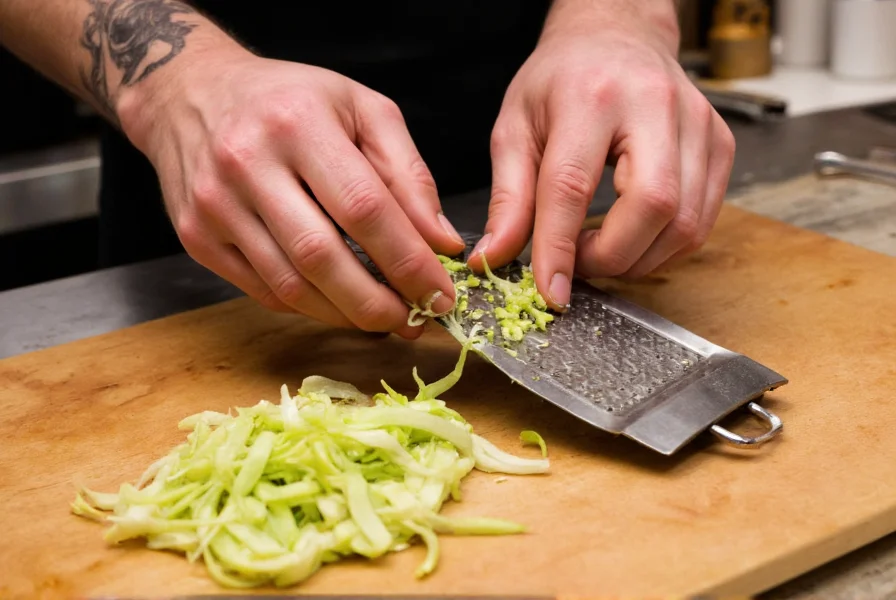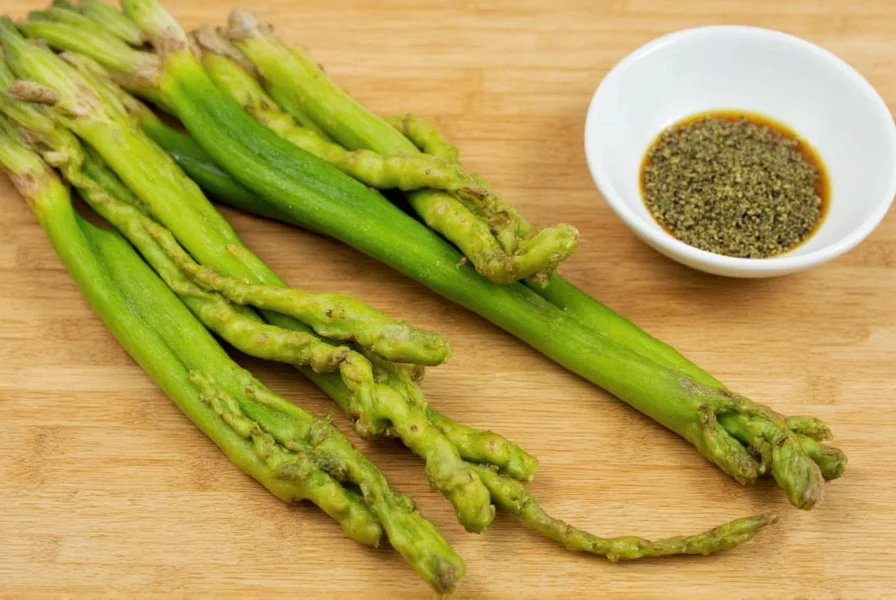Understanding the distinction between wasabi and ginger is crucial for culinary accuracy and informed consumption. Real wasabi’s rarity stems from its demanding cultivation requirements: it thrives only in specific cool, shaded, flowing-water environments, primarily in Japan’s mountain river valleys. This limited production—coupled with the plant’s 18-24 month maturation period—makes authentic wasabi exceptionally expensive, costing up to $160 per pound. Consequently, over 95% of ‘wasabi’ served worldwide substitutes horseradish paste dyed green.
The confusion between wasabi and ginger likely originated from superficial similarities: both deliver pungent flavors and grow as rhizomes. However, their biochemical profiles differ significantly. Wasabi’s heat comes from allyl isothiocyanate, which stimulates nasal passages (creating that ‘head rush’ sensation), while ginger’s pungency derives from gingerols affecting the tongue and throat. These compounds also drive distinct health properties—wasabi shows antimicrobial and potential anticancer effects in preliminary studies, whereas ginger excels in digestive and anti-nausea applications.
| Characteristic | Real Wasabi (Wasabia japonica) | ‘Wasabi’ Substitute | Ginger (Zingiber officinale) |
|---|---|---|---|
| Botanical Family | Brassicaceae (cabbage family) | Brassicaceae (horseradish-based) | Zingiberaceae |
| Active Compound | Allyl isothiocyanate | Sinigrin (from horseradish) | Gingerols |
| Heat Duration | 3-5 minutes (volatile) | 15+ minutes (stable) | Long-lasting |
| Flavor Profile | Sharp, clean, slightly sweet | Harsh, one-dimensional heat | Warm, citrusy, fibrous |
| Global Availability | <1% of market | >95% of market | Widely available |
Why Authentic Wasabi Matters
The distinction between real wasabi and substitutes isn’t merely academic—it impacts culinary experiences and potential health benefits. Authentic wasabi paste must be freshly grated from the rhizome, as its volatile compounds dissipate within minutes. This explains why traditional Japanese sushi chefs prepare it tableside. The resulting paste offers complex flavor notes—earthy, floral, and subtly sweet—that complement rather than overwhelm delicate fish.
Recent agricultural advances have expanded wasabi cultivation beyond Japan, with successful farms now operating in New Zealand, Canada, and the Pacific Northwest. These operations use hydroponic systems mimicking natural stream conditions, increasing authentic wasabi availability while maintaining quality standards. When shopping for genuine wasabi, look for products specifying Wasabia japonica with refrigeration requirements—powdered or shelf-stable ‘wasabi’ typically contains no real wasabi.

Health Implications of Real Wasabi
Research on wasabi’s bioactive compounds reveals promising properties distinct from ginger. Studies in the Journal of Agricultural and Food Chemistry indicate wasabi’s isothiocyanates may inhibit platelet aggregation more effectively than aspirin in some models, suggesting cardiovascular benefits. Its antimicrobial properties—particularly against Helicobacter pylori—could support digestive health, though human trials remain limited.
Unlike ginger, which is generally safe in culinary amounts, wasabi’s potency requires moderation. Consuming large quantities may cause temporary nasal irritation or stomach discomfort. Individuals with thyroid conditions should consult physicians before regular consumption, as cruciferous vegetables like wasabi contain goitrogens. The key takeaway: authentic wasabi offers unique benefits, but its effects differ significantly from ginger’s well-documented properties.

Identifying and Using Authentic Wasabi
True wasabi enthusiasts should know these identification markers: fresh rhizomes appear pale green (not bright green), feel heavy for their size, and emit a complex aroma when scratched. When grated, authentic wasabi forms a smooth paste without fibrous strands—a texture impossible to achieve with horseradish substitutes.
For optimal flavor, use a traditional sharkskin grater (oroshigane) which creates finer particles than metal graters. Allow the paste to rest for 3-5 minutes after grating to develop full flavor before serving. Store unused rhizome wrapped in damp paper towels inside an airtight container in the refrigerator’s vegetable compartment. Note that freezing destroys wasabi’s volatile compounds, so never freeze fresh product.
Practical Applications Beyond Sushi
While traditionally paired with sushi, authentic wasabi shines in diverse culinary applications. Its enzymatic properties make it an excellent meat tenderizer—try incorporating grated wasabi into steak marinades. The paste also elevates creamy sauces; a small amount added to aioli creates a sophisticated dipping sauce. Innovative chefs use wasabi in unexpected ways: infused into olive oil for salad dressings, blended into butter for seafood, or even incorporated into chocolate for a surprising flavor contrast.
Frequently Asked Questions
Is wasabi actually a type of ginger?
No, wasabi (Wasabia japonica) belongs to the Brassicaceae family, related to horseradish and mustard. Ginger (Zingiber officinale) is part of the Zingiberaceae family. They share no botanical relationship despite both growing as rhizomes and having pungent flavors.
Why do most restaurants serve fake wasabi?
Authentic wasabi is extremely difficult to cultivate, requiring specific cool, shaded, flowing-water environments. It takes 18-24 months to mature and is highly perishable. The horseradish-mustard substitute is cheaper, shelf-stable, and easier to produce at scale while delivering similar heat.
What does real wasabi taste like compared to the substitute?
Real wasabi offers complex flavors—sharp yet slightly sweet with floral notes—and its heat dissipates in 3-5 minutes. Substitute wasabi delivers harsh, one-dimensional heat lasting 15+ minutes with no nuanced flavor profile. Freshly grated real wasabi has a smooth texture, while substitutes often feel fibrous.
Are there health benefits unique to real wasabi?
Yes, wasabi contains unique isothiocyanates showing antimicrobial properties and potential cardiovascular benefits in preliminary studies. Unlike ginger, which primarily aids digestion, wasabi’s compounds may inhibit platelet aggregation and combat specific bacteria like H. pylori. However, most research uses concentrated extracts, not culinary amounts.
How can I identify authentic wasabi products?
Look for products specifying Wasabia japonica (not Armoracia rusticana/horseradish). Authentic fresh wasabi requires refrigeration and has a short shelf life. Powdered ‘wasabi’ typically contains no real wasabi. Premium products often indicate origin (e.g., Shizuoka, Japan or Oregon, USA) and should cost significantly more than standard substitutes.











 浙公网安备
33010002000092号
浙公网安备
33010002000092号 浙B2-20120091-4
浙B2-20120091-4